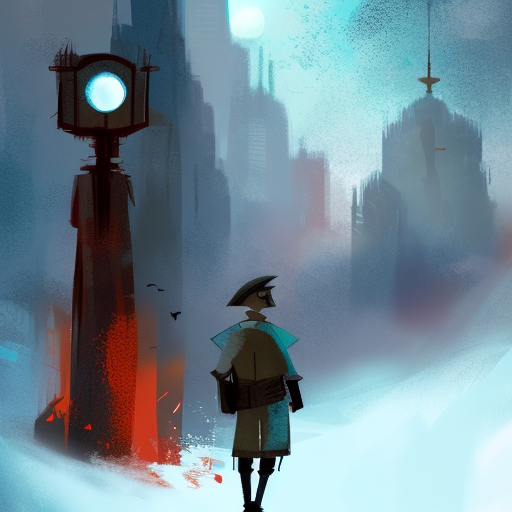One-line Summary:
In the post-apocalyptic novel “The Postman,” a drifter assumes the role of a postman to bring hope and unity to a shattered society.
Introduction:
“The Postman” by David Brin is a gripping post-apocalyptic novel set in a future United States devastated by war and chaos. The story follows a nameless drifter who stumbles upon a long-abandoned postal van and decides to impersonate a postman, delivering letters and spreading hope in a world devoid of communication and trust. As he travels through the desolate landscapes, he encounters various factions vying for power, including the tyrannical Holnists and the resilient survivors of the Oregon Coast Resistance. Through his actions, the postman becomes a symbol of unity and inspires a movement that challenges the prevailing despair. Brin’s thought-provoking narrative explores themes of resilience, the power of storytelling, and the importance of hope in the face of adversity.
The Drifter’s Journey:
The novel begins with the drifter, a man haunted by his past, wandering aimlessly through the desolate wasteland. He stumbles upon a postal van and, in a desperate attempt to find food and shelter, poses as a postman. Initially, his intentions are purely selfish, but as he starts delivering the long-forgotten letters, he witnesses the impact of his actions on the recipients. The drifter’s journey takes him from one small community to another, where he encounters individuals who have lost all hope. Through his interactions, he begins to understand the power of communication and the potential for rebuilding society.
The Holnists and the Oregon Coast Resistance:
As the postman continues his journey, he becomes entangled in the conflict between the Holnists, a ruthless group seeking to establish a totalitarian regime, and the Oregon Coast Resistance, a group of survivors fighting for freedom. The Holnists, led by General Bethlehem, are determined to eliminate any remnants of the old world and enforce their brutal rule. In contrast, the Oregon Coast Resistance represents the resilience and determination of ordinary people who refuse to surrender to despair. The postman’s actions inadvertently spark a rebellion against the Holnists, as people rally around the hope he represents.
Hope and the Power of Storytelling:
Throughout “The Postman,” Brin emphasizes the importance of hope and the power of storytelling in shaping society. The postman’s delivery of letters becomes a catalyst for change, as people are reminded of their shared humanity and the possibility of a better future. The act of receiving a letter, even if it is a fictional one, rekindles a sense of connection and reminds individuals that they are not alone in their struggles. The postman’s story spreads like wildfire, inspiring others to believe in a brighter tomorrow and motivating them to take action against the oppressive Holnists.
Key Takeaways:
- The power of hope and communication in rebuilding society.
- The resilience of ordinary people in the face of adversity.
- The importance of storytelling in inspiring change.
- The dangers of totalitarianism and the need for freedom.
- The transformative impact of small acts of kindness and compassion.
“The Postman” reminds us that even in the darkest of times, hope and communication can be powerful tools for change.
In “The Postman,” David Brin weaves a compelling narrative that explores the human spirit’s resilience in the face of despair. Through the postman’s journey, readers are reminded of the transformative power of hope and communication. The novel serves as a cautionary tale about the dangers of totalitarianism and the importance of freedom. Brin’s thought-provoking storytelling leaves a lasting impression, urging us to believe in the possibility of a better future and the role we can play in shaping it.












